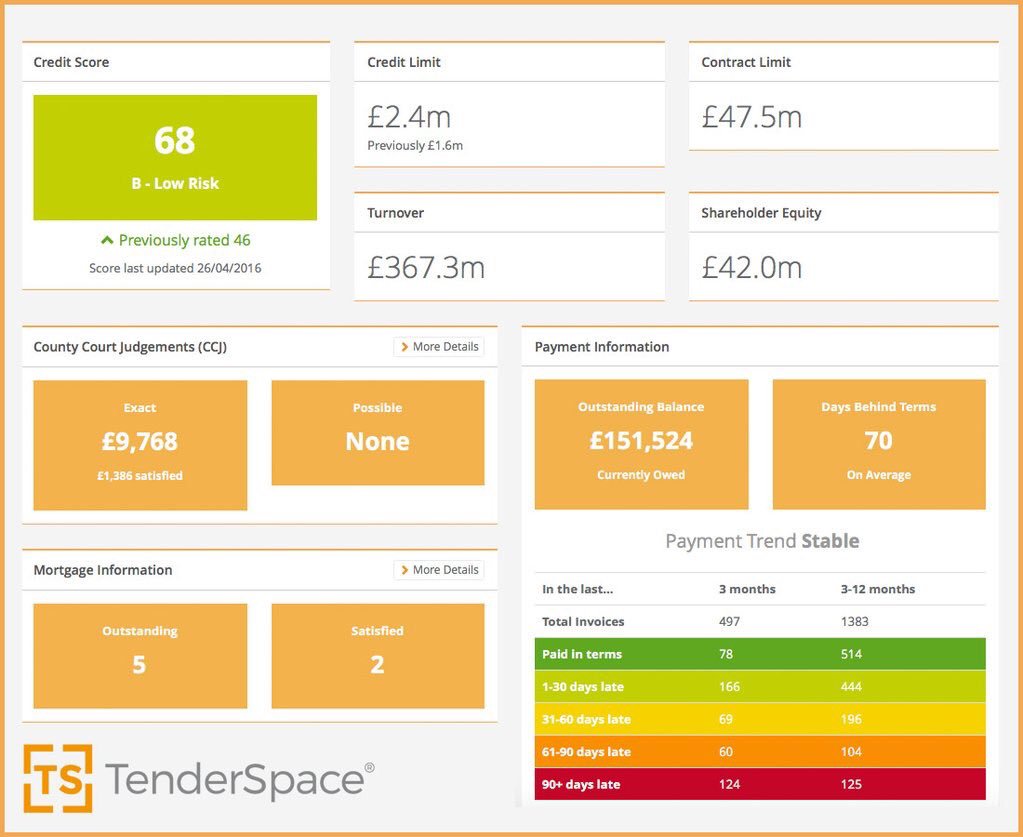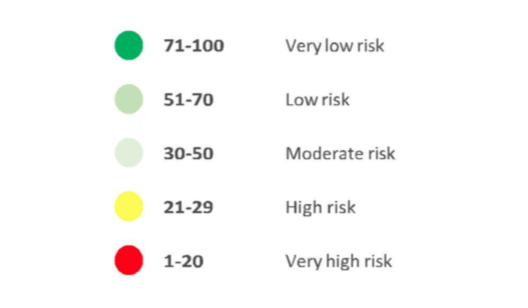Financial distress: Reading the signs in your supply chain
The construction industry is notorious for late, reduced or non-payment. It is a sector where inspections, quality of work and exact specification can all be called into question and where contractors have a proclivity to ‘pay when paid’. Add to this the challenges and financial uncertainty caused by Brexit, and the current economic turbulence we are all facing and it is easy to see why the financial situation is critical for many small construction businesses in the UK.
The key to success is obvious – find and keep reliable, solvent customers. Reducing the risk of non-payment is fundamental, especially if you are a supplier or purchaser in a longer supply chain. But how can you read the signs and know where to go for information on supply chain partners?
It can be time consuming to find and tricky to understand key financial information regarding potential clients. Companies House only offers abbreviated accounts and you won’t be able to view turnover or profit and loss. You can search online for CCJs and judgements against people and firms. But being able to effectively rate a business and understand whether a company is likely to stay solvent and pay on time can be a Herculian task.
Embracing technology and using online tools is a good start to navigating a supply chain and finding successful, solvent customers. Companies such as TenderSpace (www.thetenderspace.com) and its comprehensive suite of cloud-based, due diligence tools, allow clients to keep track of potential issues and receive alerts when there is a significant change in the financial standing of an organisation.
Amongst a host of tools, TenderSpace offers the crucial Finance Checker. It allows you to check the credit rating of potential and existing suppliers, ensuring they are solvent and are likely to continue to be so. Unless you perform a credit check, you just don’t know whether a client is capable of paying you.
The TenderSpace Finance Checker allows you, with just one click, to view information such as company details and directors, financial history, profit and loss, KPIs up to 10 years, credit score and limit, payment trends, CCJs and more. It works by using a Rating Model – a highly predictive analysis tool that can give you a view of your current and future customers.
The Finance Checker not only credit checks but also will notify you with any changes. It is a simple-to-use system that provides you with information that will allow you to make informed decisions about who to work with and will help you find steadfast suppliers and reliable customers. So how does it work?
Rating Model
The TenderSpace Finance Checker uses a Rating Model to do one thing: predict which UK companies are likely to fail within the next year. It was created by analysing companies that had failed within the previous 12 months and searching for commonalities.
To fail: a definition
The Rating Model defines the following as failure:
• In Receivership/Liquidation
• Administrator Appointed
• Appointment of Liquidator
• Meeting of Creditors
• In Receivership/Administration
• Administrative Receiver Appointed
• Administration Order
• Company is liquidated or is wound-up
Rating Bandings
Companies are rated 1 to 100 on a scale of risk. Higher risk companies get a low ranking, low risk companies rank highly. The Rating bandings is an easy-to-use segmentation tool which allows you to asses our rating model in 5 simple segments. TenderSpace Finance Checker also compares companies with similar business and then ranks companies by their likelihood of becoming insolvent, allowing for further and more insightful decisions.
Today’s technology means businesses can keep track of all aspects of the supply chain, from checking finances, to asking pertinent questions of potential clients and identifying problems early. Technology can help increase transparency and improve the business environment for the UK’s small businesses.
This article was created by TenderSpace, whose free Finance Checker, developed in conjunction with CreditSafe, offers critical decision making information and live updates on possibly detrimental financial changes.
Featured articles and news
Government consultations for the summer of 2025
A year of Labour, past and present consultations on the environment, the built environment, training and tax.
CMA competitiveness probe of major housing developers
100 million affordable housing contributions committed with further consultation published.
Homes England supports Greencore Homes
42 new build affordable sustainable homes in Oxfordshire.
Zero carbon social housing: unlocking brownfield potential
Seven ZEDpod strategies for brownfield housing success.
CIOB report; a blueprint for SDGs and the built environment
Pairing the Sustainable Development Goals with projects.
Types, tests, standards and fires relating to external cladding
Brief descriptions with an extensive list of fires for review.
Latest Build UK Building Safety Regime explainer published
Key elements in one short, now updated document.
UKGBC launch the UK Climate Resilience Roadmap
First guidance of its kind on direct climate impacts for the built environment and how it can adapt.
CLC Health, Safety and Wellbeing Strategy 2025
Launched by the Minister for Industry to look at fatalities on site, improving mental health and other issues.
One of the most impressive Victorian architects. Book review.
Common Assessment Standard now with building safety
New CAS update now includes mandatory building safety questions.
RTPI leader to become new CIOB Chief Executive Officer
Dr Victoria Hills MRTPI, FICE to take over after Caroline Gumble’s departure.
Social and affordable housing, a long term plan for delivery
The “Delivering a Decade of Renewal for Social and Affordable Housing” strategy sets out future path.
A change to adoptive architecture
Effects of global weather warming on architectural detailing, material choice and human interaction.
The proposed publicly owned and backed subsidiary of Homes England, to facilitate new homes.
How big is the problem and what can we do to mitigate the effects?
Overheating guidance and tools for building designers
A number of cool guides to help with the heat.
The UK's Modern Industrial Strategy: A 10 year plan
Previous consultation criticism, current key elements and general support with some persisting reservations.
Building Safety Regulator reforms
New roles, new staff and a new fast track service pave the way for a single construction regulator.



























